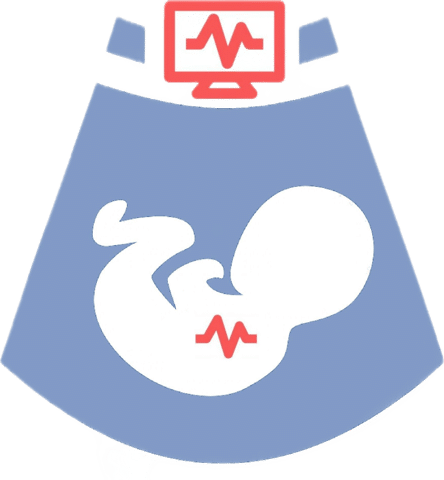Background of eoFGR
Fetal Growth Restriction (FGR) is a prevalent obstetric condition and a significant contributor to perinatal morbidity and mortality. Early-onset FGR, diagnosed at or before 32 weeks, differs from late-onset FGR not only in its timing but also in clinical manifestations, its link to hypertension, and the patterns and severity of placental dysfunction.
The perinatal outcome of FGR is closely tied to the extent of growth restriction. An estimated fetal weight below the 3rd percentile and/or abnormal umbilical artery Doppler readings are strongly correlated with adverse perinatal outcomes.
Read more
FGR is a complex and multifactorial disorder impacting fetal development, often leading to multiple perinatal complications. Currently, it stands as a major risk factor for long-term poor neurological outcomes. These likely arise from the consequences of fetal hypoxia and/or indicated premature birth, and from the consequences of fetal adaptational processes. Numerous studies, spanning both humans and animals, highlight the connection between low birth weight and the development of cardiovascular diseases, including an increased risk of hypertension, diabetes, dyslipidemia, and coagulation issues in children and adults.
Early-onset FGR constitutes a smaller portion of FGR cases and is frequently linked to gestational hypertension and/or pre-eclampsia, observed in up to 50-70% of instances.
Etiology
The differential diagnosis of early-onset fetal growth restriction (eoFGR) is broad: placental and structural, genetic, viral, maternal and environmental factors need to be considered. The dominant mechanism of eoFGR is insufficient maternal-placental exchange between mother and fetus. The most common placental lesion is a placental developmental disorder, leading to maternal-placental vascular malperfusion (MVM). MVM arises from events in the first trimester when placentation occurs, a process that is influenced by many factors. In the placentation period of the first trimester, inadequate remodeling of the maternal spiral arteries with trophoblast invasion leads to a persistent high resistance, and high velocity influx of maternal blood to maternal-fetal interface.
Read more
Even though these processes already start in the first trimester, the only finding that may already be recognizable is an increased uterine artery resistance measurement. This measurement can however not be used as a diagnostic tool, but only as a screening tool, for instance to indicate aspirin use. Therefore, inadequate placental development will typically not become apparent until eoFGR is clinically well-recognized or when the mother develops preeclampsia and concomitantly fetal growth restriction is also diagnosed. Moreover, the exact placental lesion is only recognized after birth at the pathologist’s desk…
Assessment
The diagnostic and monitoring strategy builds on pattern recognition. Several ultrasound measurements can indicate placental insufficiency. These measurements are mainly Doppler velocimetry of maternal and fetal blood vessels, but also (sequential) biometry measurements. These patterns help identify fetuses at risk for the onset of chronic or acute-on-top-of-chronic hypoxia and ensuing hypoxic injury or intrauterine fetal demise (IUFD).
Doppler ultrasound describes blood flow velocity patterns. The relationship between diastolic and systolic velocities in arteries indicate the resistance of the organ the blood is transported to.
Maternal vessels
- Uterine artery: may be a useful diagnostic tool if resistance is high, and in that case supports the diagnosis of placental insufficiency through Maternal Vascular Malperfusion. As a monitoring tool its place is not well-established.
Read more
Fetal vessels
- Umbilical artery: is a useful diagnostic tool if resistance is high, and in that case supports the diagnosis of placental insufficiency through Maternal Vascular Malperfusion. As a monitoring tool it can be used to indicate the risk of onset of hypoxia and for that reason may inform the frequency of cardiotocography.
- Middle cerebral artery: is a useful tool to describe fetal hemodynamic redistribution in respons to placental insufficiency. In situations of scarcity, the fetus will prioritize the most important organs, including the brain, and deprioritize others, like the kidneys (oligohydramnios).
- Fetal ductus venosus: is a useful tool for monitoring rather than diagnosis. An abnormal measurement is an early sign of cardiac decompensation, and delivery may be pursued because fetal hypoxia is imminent.
Other measurements may also be useful:
Biometry: when the fetal head, abdomen and femur are measured and the abdomen among the individual measurements is particularly small, this may suggest malnourishment. Fetal weight can be estimated through an algorithm that takes these measurements into account. Estimated fetal weight should not be considered a precise scale weight. Also note that a one-time measurement is only indicative of past growth. Sequential measurements can contribute better to the assessment of current growth.

Treatment
Presently, there is no effective treatment to improve placental insufficiency. The only effective intervention to ameliorate the course of the disorder and minimize the risk of adverse outcomes is timely delivery.
The main challenges therefore, are timely prenatal recognition and timely delivery when recognized.
Read more
Once it is determined that the pregnancy is complicated by FGR, the approach involves monitoring the fetal condition and considering delivery when the health risks of being born become lower than the risks of remaining in utero. An essential co-factor in this decision-making process is fetal maturation. There is a continuous interplay between maturation and size/hypoxia in clinical management. As a maternal healthcare provider, the fear of fetal mortality often plays a crucial role in the decision to expedite delivery. A significant portion of the decision-making process relies on clinical experience, and new information derived from clinical studies to rationalize these decisions is highly needed!

